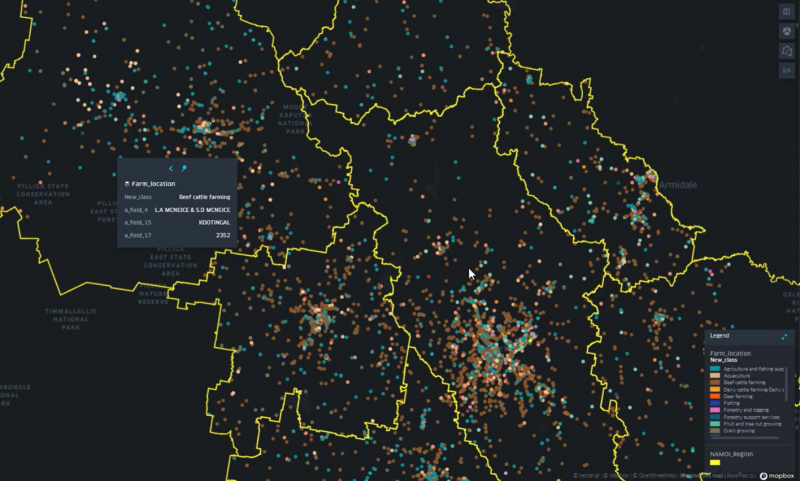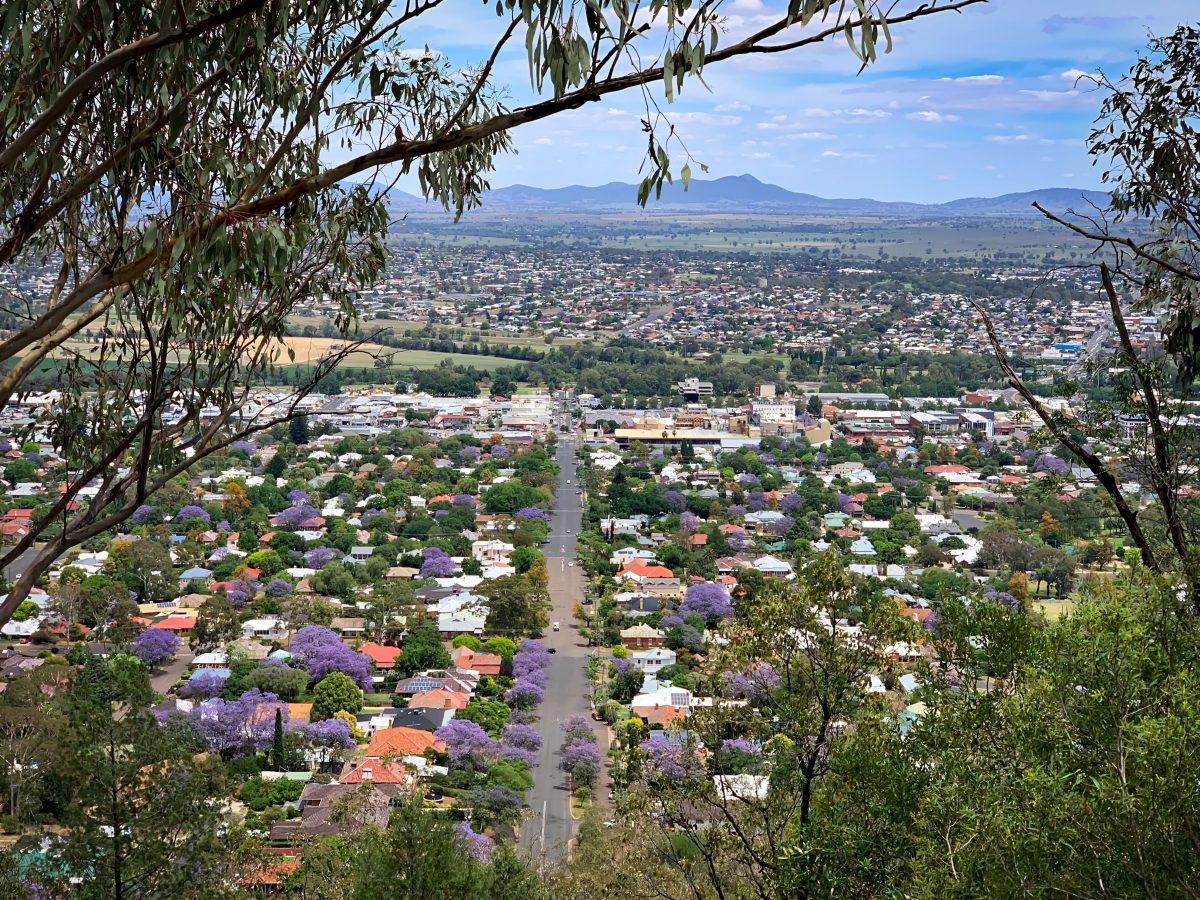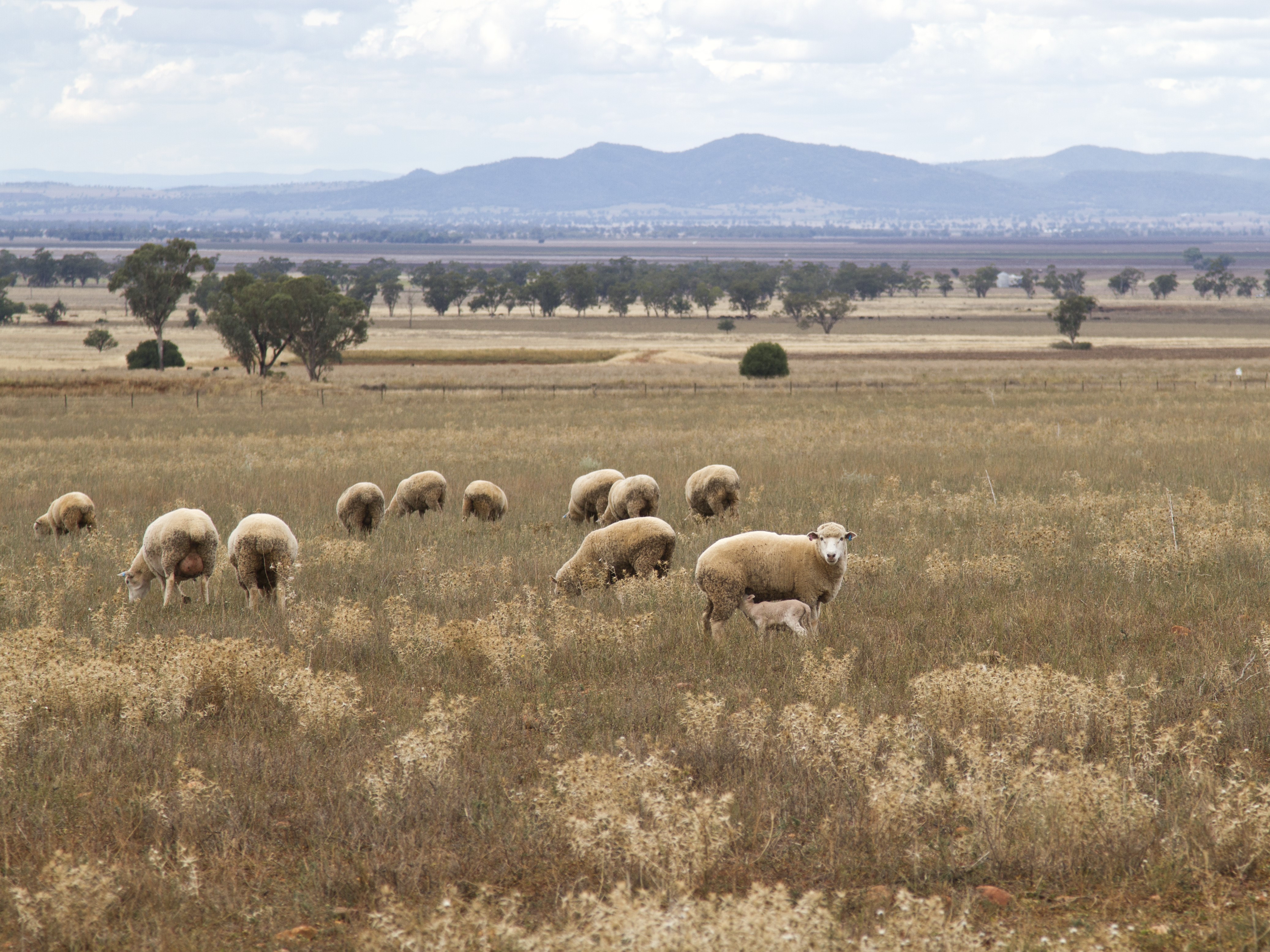Since mid-2022, the Namoi Joint Organisation of Councils (Namoi JO) has been working with UNSW-based mapping experts to develop an industry database of agribusiness across the Local Government Areas of Walcha, Tamworth Regional, Gunnedah and Liverpool Plains.
In the first six months of the FFSCRC-backed project, UNSW Professor Hoon Han and postgraduate research assistant Ripan Debnath conducted a literature review to select “adequate and relevant” criteria by which land suitability could be determined, says Prof. Han.
Based on this review, the project team arrived at more than 18 ‘suitability’ factors, including existing agrifood operations and ancillary businesses, topography, road, rail, water and energy infrastructure, data on climate and weather, and more.
The team collected relevant data from multiple sources (local and state government agencies, business registers, BoM, etc) to develop a web-based, open-source, geographic information system (GIS)-based multi-criterion analysis (MCA) tool – a multi-layered geospatial map of the region that incorporates as much relevant data as possible, also taking into account the zonings and statutory rules being established for new intensive animal-protein precincts by the Namoi RJP initiative.
“A multi-criteria analysis is a decision-making framework for ranking options suited to solving problems with multiple alternative courses of action,” Professor Han explains. “Combined with Geographic Information Systems (GIS), MCA helps determine one option against multiple possibilities in planning decision-making problems.”
Previous research has shown that land suitability analysis using GIS-based MCA methods has been critical in the sustainable management of land in both agriculture and livestock-rearing.
The purpose of the Namoi-region MCA tool is to guide planners across the region in selecting optimal locations for future livestock farming operations (meat/milk/eggs/wool) and ancillary agribusinesses (abattoirs/cold-storage facilities/feed suppliers/warehouses), and for associated infrastructure. This, in turn, will support sustainable industry growth and attract investment to the region.
The tool is part of implementation plans for the NSW Government’s Regional Jobs Precinct (RJP) in the Namoi.
It is hoped that the tool will empower Councils in the Namoi JO to respond effectively to this opportunity to expand and develop agribusiness in the region.

Credit: Prof. Hoon Han
Stakeholder feedback
The next step in the project was for the research team to get feedback from Namoi-region stakeholders – local knowledge it will use to fine-tune the tool and particularly, the weights assigned to specific suitability criteria.
To do so, the project team organised a free hybrid-format workshop in Tamworth on 24 March 2023, which was attended by members of all four participating councils (Tamworth, Gunnedah, Walcha and Liverpool Plains), state government, industry and the FFSCRC.
Prof. Han and Debnath guided attendees through the development and use of the MCA tool, then administered two short surveys, each followed by a constructive discussion. The project team will use the survey results and verbal feedback to adjust the weights assigned to the various suitability criteria used in the Namoi-region multi-criteria decision tool.
For further information about the workshop or the ongoing project, email Future Food Systems CRC on info@futurefoodsystems.com.au.

Aerial panorama of Tamworth, in the Namoi region of New South Wales. Credit: Pavel Putilin/ Shutterstock
Workshop activities
During the online workshop, attendees were able to:
- Explore the Namoi-region Multi-Criteria Decision Tool: A free-to-use and lightweight spatial multi-criteria assessment (MCA) tool known as MCAS-S, which has been adopted for the study.
- Learn about the criteria used to develop the tool: Currently, the model includes more than 18 suitability criteria, grouped under five broad categories and integrated into the MCAS-S tool.
- Evaluate and comment on the results of a trial run using the tool: A test analysis output, based on weightings derived from relevant literature surveys, was presented; this was followed by a discussion on appropriate weightings.
- Complete a survey to help adjust weights for each criterion in the tool: The project team conducted a survey that asked workshop attendees to rank each of the suitability criteria according to their relative importance. The survey used the Analytic Hierarchy Process (AHP), one of the methods most commonly used for multi-criteria decision-making (MCDM).
- Provide feedback on the model/tool: Workshop attendees were also asked to take a short survey on the modelling process, suitability criteria and analytic tools used by the project team and asked to suggest important factors that have been overlooked.
Once the project team has fine-tuned the tool, it can be used to guide the selection of locations for future agribusinesses, ancillary services, and associated infrastructure in NSW’s Namoi region.
Lead image: Sheep grazing on a farm in the Namoi region of NSW. Credit: Jack Scott, Shutterstock


